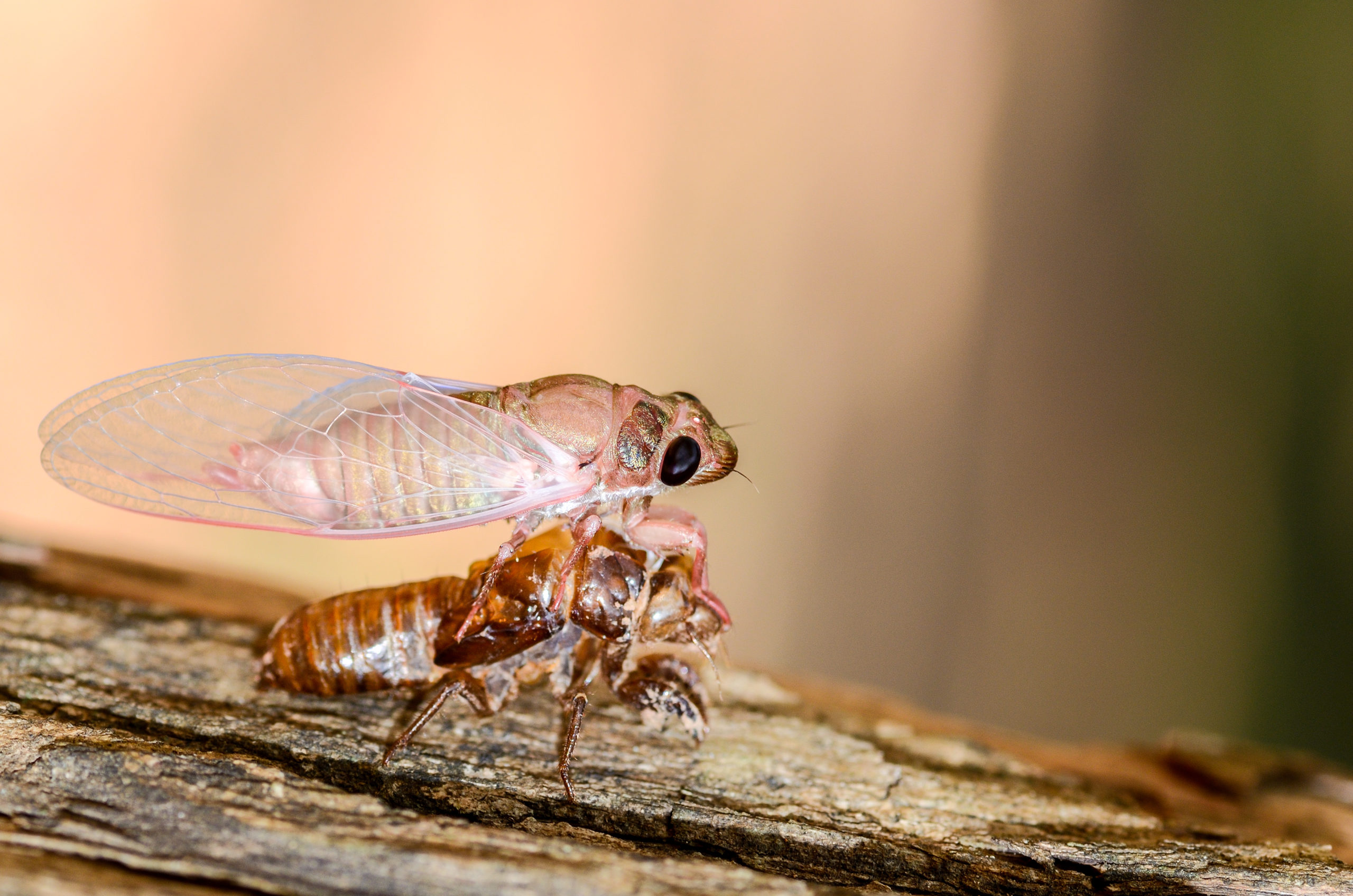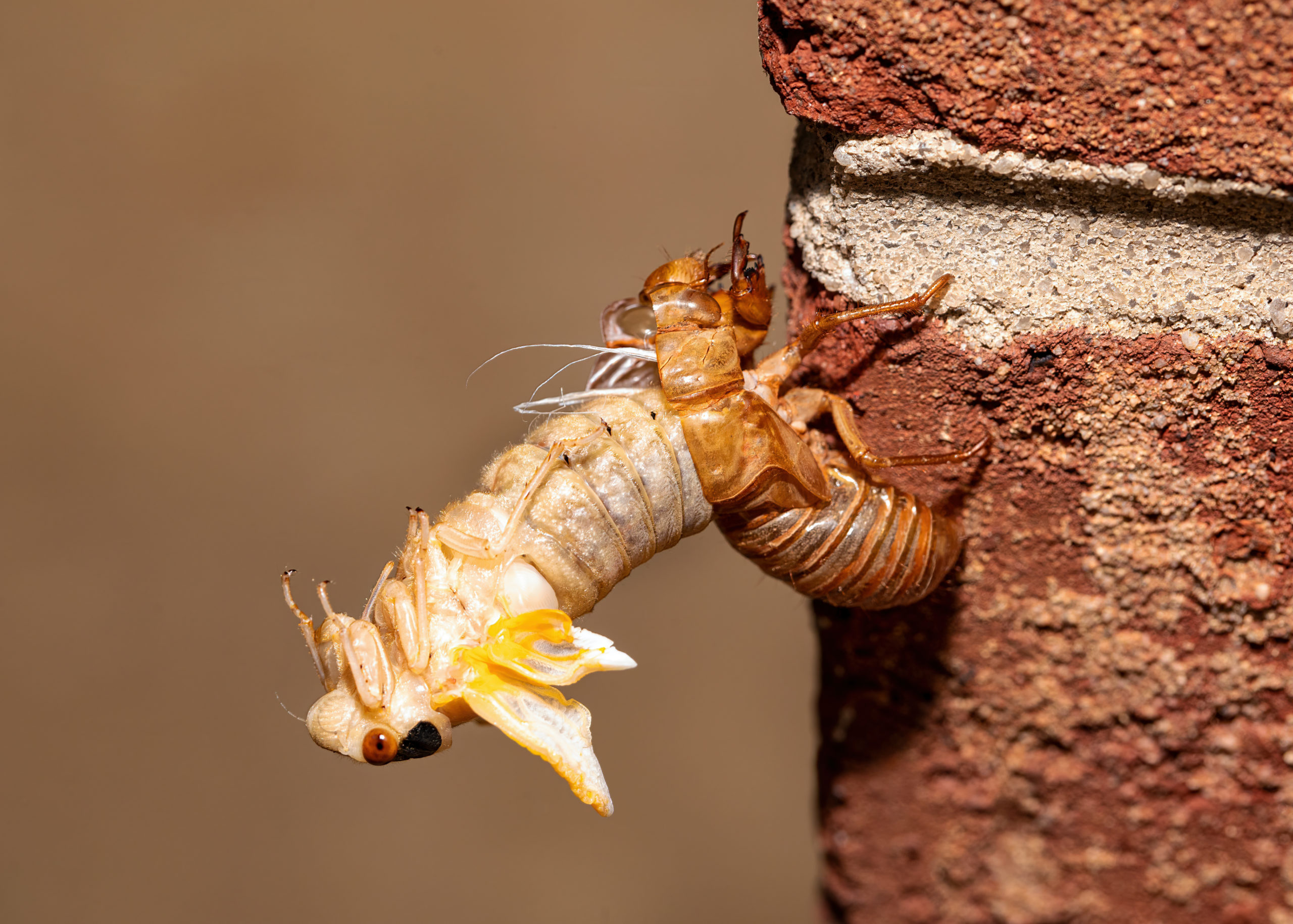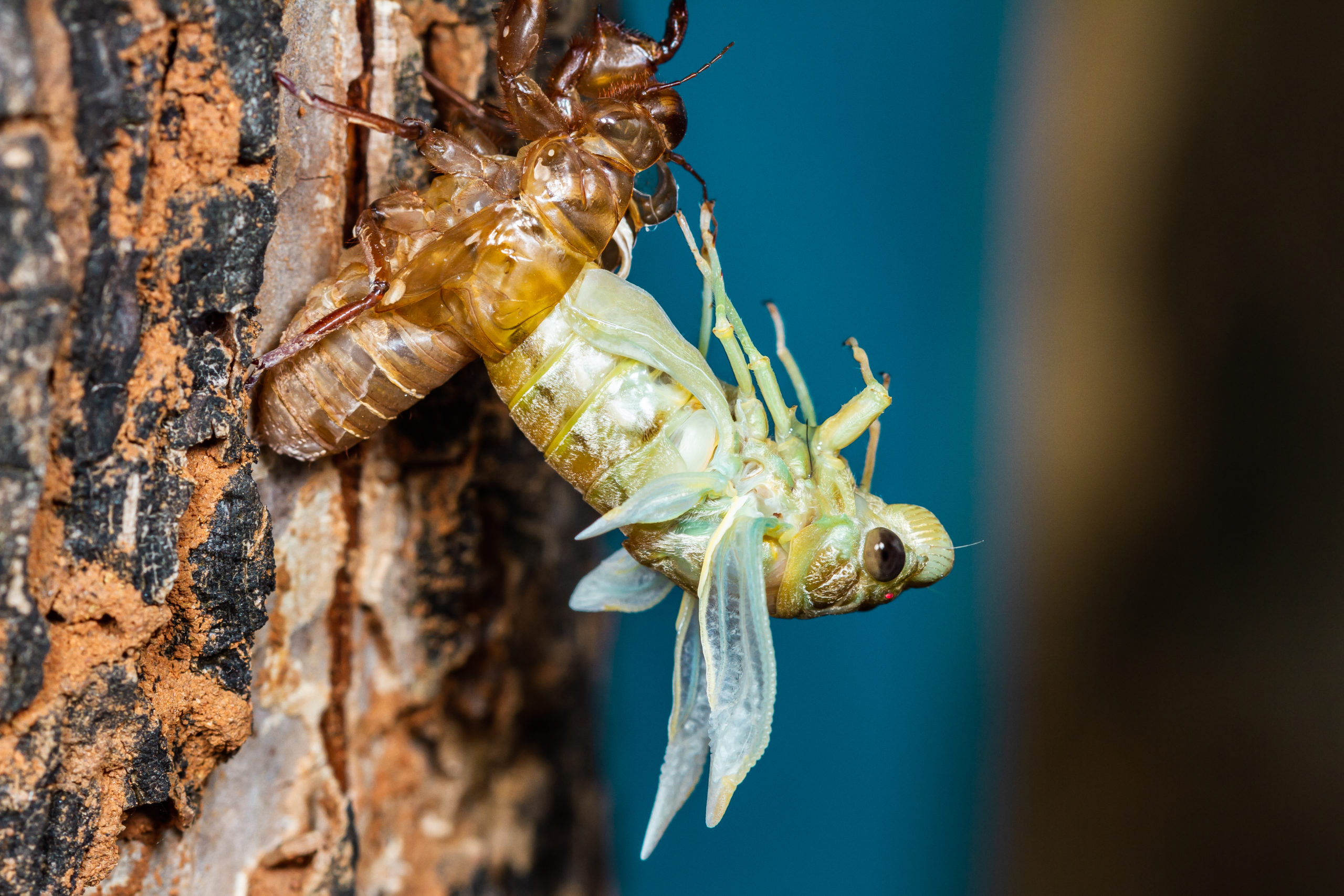Mysterious Molters: The Truth About the Molting Process
Mysterious Molters: The Truth About the Molting Process
The life stages of most insects seem pretty straightforward; they go from an egg to a larvae to a pupa to an adult. It seems to mirror the stages of a human, since we go from an infant to a child to a teenager to an adult. But we are, thankfully, missing a key part of the insect’s life cycle: molting. This strange process is when an insect sheds its exoskeleton so that it can continue growing into a full adult. But there is more to this activity than we may think. Let’s look at the full molting process along with the statistics of how the insect can accomplish this strange task time and again.
External Factors of Molting

First, let’s look into some of the factors surrounding the molting process and how they affect the insect. The largest factor is the temperature of its environment. Higher temperatures encourage molting, so a consistent spike in temperature means a more frequent molting process for the insects. The exact reasoning behind this is still unclear, but it makes sense when we think about the logistics of heat affecting everyone. We get very uncomfortable when it’s hot outside, especially if we’re not near air conditioning or a body of water, so it’s logical to believe that insects also feel restricted and frustrated when it’s hot outside. It seems like a good thing to molt so many times, since that can only mean that the insect will be larger and therefore more protected. But actually, it’s not great for insects to molt so much. They gradually become smaller and produce less offspring with each unnecessary molt. The higher temperatures also inhibit their ability to breathe, which is already heavily restricted by the molting procedure. But more on that later.
Some insects are also affected by access to food or a lack thereof. If they don’t have the nutrients and energy to molt, then they are less likely to successfully molt. But many kinds of insects have a fixed number of times that they molt. For example, lice molt about three times in their young stages. The wide range of times that an insect will molt in general is about five to sixty times, depending on the species. That’s a lot of empty exoskeletons lying around! Speaking of exoskeletons, it’s worth looking into the makeup of these tough exteriors in order to understand this process further.
The Exoskeleton

The larvae stage is the first stage where the insect begins to molt. The only priorities of this young creature are to grow and eat, which they certainly do a lot of. Some insects craft cocoons for extra protection, but these are mostly done by insects that go through metamorphosis. Since the exoskeleton becomes too small for the larvae as it continues to grow, it must be shed in order for the larvae to continue growing. It’s like how humans grow into adults; kids grow out of clothes and shoes very often as they sprout, especially for the ones who are already taller than their peers. There are three main layers in the exoskeleton of many insects. Each one plays a key role in the molting process, as well as keeping the insect alive and as protected as possible. Here are the three layers and their primary functions:
1. Cuticle
This is the outer layer of the exoskeleton. It is also non-living, unlike some of the inner parts of the shell. This is the part that completely sheds off when the molting process is occurring. The cuticle is very rigid and provides a protective layer around the insect. Without it, the insect would be exposed to the elements and predators even more than they already are. The cuticle also protects against water loss since it’s so rigid and tight against the insect’s body. An insect will have a lot of different cuticles in its life since it will shed so many, but each one serves its purpose in protecting the insect from the dangers of the natural world.
2. Epidermis
The middle part of the exoskeleton, the epidermis is the only living part of the exoskeleton. Since it is cellular, it is considered to be living. Its primary function is to make a new cuticle, which is a very important job. Since the epidermis is living, it’s fair to say that it grows with the insect. It produces new cuticles, sometimes very frequently, so it needs to always be firing on all cylinders.
3. Basement Membrane
The basement membrane is the innermost layer of the exoskeleton, but it still serves an important purpose in protecting the insect. It separates the body from the exoskeleton so that the insect isn’t affected by the elements hitting the shell or the molting process. If this membrane didn’t exist, the exoskeleton would be in direct contact with the insect and would likely do more harm than good.
While some of these layer seem more important than the others, they are all extremely important to the survival and growth of the insect. The exoskeleton gradually turns the color of the general insect, which is how the insect stays relatively camouflaged. The shell is affected by the insect’s age, exposure to weather, and the wear of life. The molting process depends on the three layers functioning well, and this activity is contingent on the health and stability of the layers and insect as a whole.
What Happens in the Molting Process?

Now, we come to the main event: the molting! This strange activity can be whittled down to one goal, shedding the exoskeleton, but it’s not as simple as the insect taking off its exoskeleton like a pair of pants. The insect has to prepare for it and recover from it afterward, as it is a risky act that inhibits their breathing and leaves them vulnerable to literally every predator out there.
Okay, here’s how it works. The insect prepares to molt by taking in a lot more air than normal, about 41% more. This creates more pressure against the already tight exoskeleton, which will then crack. The larva crawls out the back end of the skeleton and hides until the new cuticle forms. This is why most insects molt at night, since the few minutes while it’s happening are the most vulnerable for the soft larvae. They use this new exoskeleton until they eat enough to become too big for the exoskeleton, then start it all over again.
To put it in more scientific terms, the epidermis separates from the cuticle and forms a defensive shield around the insect. Then, chemicals break down the old shell and the protective shield forms with the new cuticle, which hardens after the insect inhales more frequently to split and escape the old exoskeleton. The danger in this act, besides being temporarily vulnerable, is that the insect doesn’t breathe much during the molt. This is mainly because the tracheole linings molt along with the exoskeleton, plus the trachea is blocked. So the insect has no way of breathing until a new one forms with the new cuticle. They can actually survive while they don’t breathe for 45 to 60 minutes. This is also why insects inhale so much more before and after they molt; they need the sudden rush of air to make up for the time that they go without air. Insects in general have evolved to tolerate this act, which is how they don’t die off every time they shed their exoskeleton.
Pest Control Works on Every Insect Stage
Whether the pests are molting, still in the eggs, or full adults, pest control services can take care of the infestation at the roots. Our team is equipped to handle pests of all stages and keep your home or business pest-free. Contact us at any time to find out how we can rid your space of a pests that make the mistake of leaving the evidence of their shells behind.
Citations
Clay, T. (n.d.). Louse. Britannica. Available at https://www.britannica.com/animal/louse#ref216939 (Accessed on May 10, 2022).
Glass, D. (2005, December 21). Insect molting. Indiana Public Health: Moment of Science. Available at https://indianapublicmedia.org/amomentofscience/insect-molting.php (Accessed on May 10, 2022).
Insect molting process. (n.d.). Insect Identification. Retrieved May 10, 2022, from https://www.insectidentification.org/process-of-molting.php
Lobsenz, N.M. (1962). The insect world. Golden Press, Inc.
Stokstad, E. (2014, August 29). Insect molting is ‘like having your lungs ripped out.’ Science. Available at https://www.science.org/content/article/insect-molting-having-your-lungs-ripped-out (Accessed on May 10, 2022).
Keep Pests Out of Your Holiday Gatherings
Keep Pests Out of Your Holiday Gatherings Keep Pests Out of Your Holiday Gatherings Summary: The holiday season is all about good food [...]
Cold Weather vs. Warm Weather Infestations: How Temperature Shapes Pest Activity
Cold Weather vs. Warm Weather Infestations: How Temperature Shapes Pest Activity Cold Weather vs. Warm Weather Infestations: How Temperature Shapes Pest Activity Summary: [...]
Garden Pests Do Not Hibernate Indoors – How They Attack Houseplants And What To Do
Garden Pests Do Not Hibernate Indoors – How They Attack Houseplants And What To Do Garden Pests Do Not Hibernate Indoors – How They Attack [...]
The Scariest Pests (And Why They Freak Us Out)
The Scariest Pests (And Why They Freak Us Out) The Scariest Pests (And Why They Freak Us Out) Summary: A practical, homeowner-friendly guide [...]
Favorite Foods of Rats and Mice
Favorite Foods of Rats and Mice Favorite Foods of Rats and Mice Summary: Rats and mice are surprisingly picky about what they eat—especially [...]
Where Do Spiders Like to Hide? A Locals’ Guide to Sneaky Spider Spots (and What to Do About Them)
Where Do Spiders Like to Hide? A Locals’ Guide to Sneaky Spider Spots (and What to Do About Them) Where Do Spiders Like to Hide? [...]

